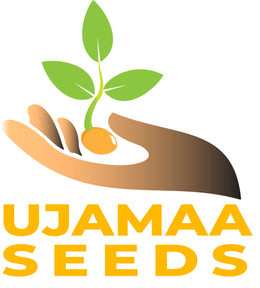Einkorn Wheat
Sorry we have run out of stock for this item. Please check back later.
Triticum monococcum
Seeds per pack ~100
Germination: 51% BOTANICAL SAMPLE DISCOUNTED
Einkorn is the oldest domesticated wheat. It has a nutty flavor and a lower gluten profile than other wheats. It can be grown as a winter grain, planted in the fall, or a spring grain in some climates. Einkorn is easy to grow, easy to digest, and delicious!
Einkorn, known scientifically as Triticum monococcum, is one of the earliest cultivated forms of wheat, dating back over 10,000 years. It is considered a type of hulled wheat, meaning that its grains are encased in an inedible husk that must be removed prior to consumption. Einkorn is distinct from more common types of wheat in that it has a simpler genetic structure, being diploid (having two sets of chromosomes) compared to the hexaploid structure (six sets of chromosomes) of modern wheat.
Einkorn flour is notable for its rich, nutty flavor and is often used in bread, pasta, and other baked goods. Nutritionally, einkorn is high in protein and dietary fiber and contains significant amounts of various nutrients, including antioxidants, B vitamins, and minerals like magnesium and zinc. Its gluten is different from that of modern wheat, which makes it easier to digest for some people, though it is not gluten-free and is not suitable for those with celiac disease. Einkorn has seen a
resurgence in popularity due to its nutritional benefits and its ability to grow in poor soil conditions without the need for chemical inputs.
GROWING TIPS
Growing Triticum monococcum, or einkorn wheat, involves several key steps that are similar to cultivating other types of wheat but with some specifics to consider due to Einkorn's unique characteristics. Here's a guide on how to grow einkorn wheat:
Selecting the Right Site: Einkorn prefers well-drained soil with a neutral to slightly acidic pH. It can tolerate poor soil conditions better than many modern wheat varieties. Einkorn grows best in temperate climates and can tolerate cold winters, making it suitable for higher elevations and northern latitudes.
Preparing the Soil: It's beneficial to test the soil for nutrients and pH. Amend the soil based on the test results, although einkorn generally requires less fertilizer than modern wheat varieties. Prepare the land by tilling to ensure the soil is loose and aerated, which helps in root development and water infiltration.
Seeding: Plant einkorn in early spring or fall, depending on your local climate. Fall planting can allow for the use of winter rains to promote growth. Use a seed drill or broadcast the seeds by hand for small plots. Einkorn should be planted at a depth of about 1 to 2 inches. Aim for a seeding rate of about 150 to 300 seeds per square meter, depending on your yield goals and seed size.
Watering and Weed Management: Einkorn is more drought-tolerant than many other wheat species but will need regular watering during prolonged dry spells, especially during germination and early growth stages. Regular weeding is important, as einkorn does not compete well with weeds. Hand weeding or hoeing is effective for small plots. Using organic mulch can help suppress weeds and retain soil moisture.
Fertilization: Einkorn generally needs less nitrogen than modern wheat but may benefit from phosphorus and potassium, depending on soil conditions. Organic fertilizers like compost or manure can be used to maintain soil health and support moderate fertility levels.
Harvesting: Einkorn matures in about 90 to 100 days after planting for spring crops, or it may overwinter and be ready by mid-summer if planted in the fall. Harvest when the stalks are dry and the grains are hard. Use a scythe or a combine for larger areas. Threshing can be done mechanically or by hand.
Post-Harvest: Ensure the grains are thoroughly dried before storage to prevent mold and spoilage. Store the dried grains in a cool, dry place. Einkorn's husk provides natural protection against pests and decay, making it easier to store.
Growing einkorn can be a rewarding experience, especially for those interested in ancient grains with nutritional benefits and environmental resilience. While it may not yield as heavily as modern wheat varieties, its robust nature and unique flavor profile make it a valuable crop for small-scale farmers and home gardeners.



